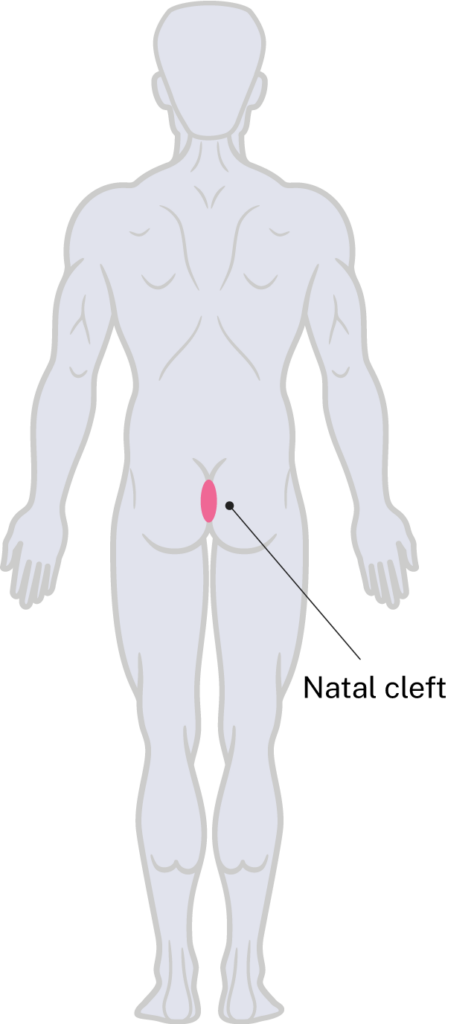Natal cleft
Specific risks
Although not technically classed as a pressure injury, splits to the natal cleft can be just as problematic as a pressure injury.
Natal cleft splits occur because of a combination of moisture and stretch.
The risk of natal cleft splits occurring are greatest with:
- episodes of incontinence, use of incontinence pads, use of synthetic fabrics or living in hot and humid environments
- sliding into a commode seat or sling causing the buttocks to splay
- manual handling and skin checks where the buttocks are pulled apart for hygiene and skin checks
- thick seams from clothing
- These areas should be assessed by palpating for ‘boggy’, soft, or tender areas.

Management of breakdown
- Review and identify causative factors such as the mattress, cushion, showering aids, other seated surfaces, transfers, clothing, muscle bulk, care routines and continence management.
- Review and consider a different sling style or size.
- Review and consider the use of a reverse-style shower commode seat and a different aperture to prevent sliding into the seat and to offload the cleft area.
- Moisture management in the natal cleft by drying the area as able after showering and applying a barrier cream. Avoid using heat-based options such as hairdryers that can burn the skin.
- Manage environmental factors such as staying indoors during hot and humid environments and using air conditioning to control the environmental temperature and air moisture.
- Change clothing daily and wash cushion covers regularly to avoid bacterial growth in the fabric.
- Be gentle when attending to manual handling tasks and checking the skin.
- Consider consultation with the QSCIS team.
Check out other pressure injury locations and learn how to manage them.